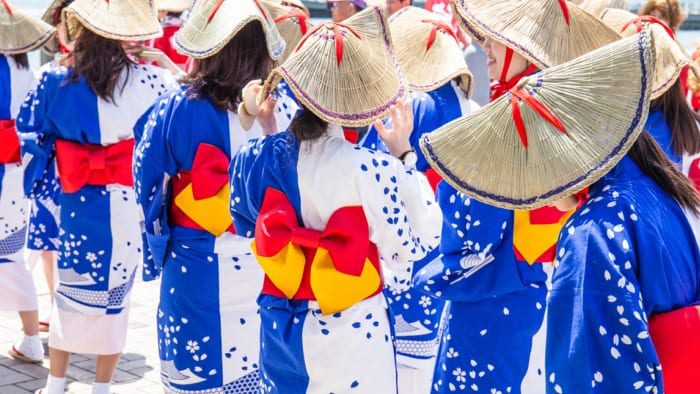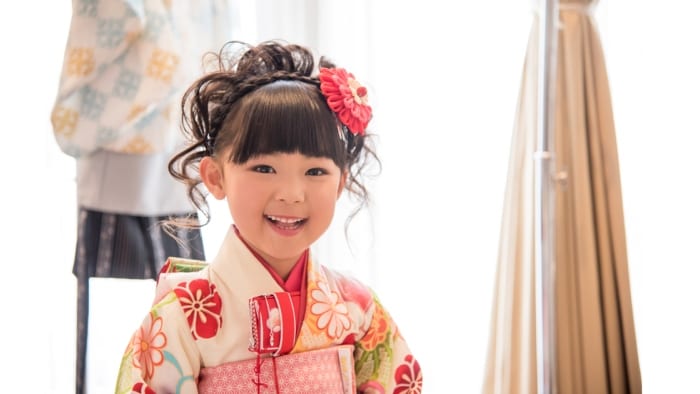At first glance, yukatas may appear quite similar to kimonos, both being robes with flowing sleeves tied with a silky belt. Originally designed as bathrobes, their name even translates to “bathing clothes.” Initially made from simple dyed cotton and primarily used in bathhouses, yukatas have now evolved into a more casual and lightweight Japanese outfit, gradually replacing the casual kimono over the past few decades. Today, they are commonly worn at festivals, inns, and during Japan’s humid summers. Modern yukatas come in vibrant colors and bear a closer resemblance to light kimonos than their simple blue ancestors. Since the 1990s, they have become stylish and fashionable.
The term “yukata” originates from the word “yukatabira,” which referred to a robe used for drying the body instead of a towel. Initially, yukatas were crafted from hemp, but during the Edo period, cotton gained immense popularity and became the primary fabric for yukatas. Cotton was easily cultivated and dyed with indigo, which provided a blue color that resisted fading and bleeding during washing. The cotton fabric was dyed by applying a resist to specific areas and then adding the dye, resulting in white designs on a blue background.
The cool colors and lightweight nature of cotton yukatas made them highly favored during the scorching Japanese summers. As public bathhouses gained popularity, the blue yukatas quickly spread throughout the country. Unlike the more formal and artistic kimonos, yukatas often featured playful and lighthearted designs, suitable for relaxation after a bath. As bathhouses served not only for bathing but also for eating, drinking, and unwinding, yukatas became a staple of loungewear.
The Meiji restoration, which occurred from 1868 to 1912, marked the emergence of yukatas as casual wear for everyday activities in town. The convenience and practicality of Western fabrics and clothing influenced people’s desire for simpler and more comfortable attire, making yukatas a popular choice for daily wear during hot weather. While Western clothes eventually gained prominence as the preferred daily wear, yukatas continued to be the favored choice for summer festivals. In the late 20th century, a trend emerged where many individuals combined yukatas with Western accessories and shoes, creating a new and eclectic style. As the West developed a fascination with Japanese fashion, this fusion trend further flourished. Today, yukatas are often paired with artistic obis or traditional Japanese wooden sandals called geta, and fashion designers play with the yukata’s panels to create artistic and flattering shapes.
If you have any questions about yukatas, feel free to send us an email!



